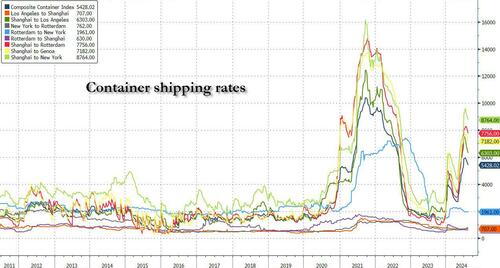China Port Explosion Snarls Trans-Pacific Container Trade
The closure of Ningbo Beilun’s Phase III Terminal is expected to have cascading effects on the main trans-Pacific trade lanes out of Asia, and the supply chain at large, in the midst of the peak shipping season.
As Stuart Chris reports for FreightWaves, container traffic has been halted at Ningbo following a shipboard explosion involving hazardous materials at one of the world’s busiest intermodal hubs.
The explosion aboard the Yang Ming vessel YM Mobility on Friday reportedly involved organic peroxide materials.
There were no injuries in the blast, but the terminal has been closed until further notice.
Ningbo is the world’s third-busiest container port, with volume of 33.35 million twenty-foot equivalent units in 2023.
The shutdown couldn’t come at a worse time as record peak volumes for North American imports are forecast for August, after an “early peak” in June as shippers rushed to get holiday merchandise ahead of expected supply chain disruptions in the fall.
“With this closure, Ningbo Port is no longer operational, compounding existing supply chain disruptions exacerbated by Typhoon Gaemi in July,” said Christian Roeloffs, co-founder and chief executive of Container xChange, an online container marketplace based in Hamburg, Germany, in a customer advisory.
“For container trading companies and those involved in container leasing, this incident presents some straightforward challenges worth accounting for. The disruption at the Ningbo Port, combined with pre-existing congestion at major Asian ports, will lead to a deterioration of ocean schedules and further delays in container availability,” Roeloffs said.
“Companies must brace for increased dwell times, potential re-routing of shipments, and a tightening of available container supplies, especially for hazardous and dangerous goods.”
The exchange advised shippers to evaluate alternative routes through other ports but to expect increased congestion at neighboring hubs.
Shippers should also plan for extended delays amid longer dwell times at major ports, and adjust inventory levels and delivery schedules accordingly.





